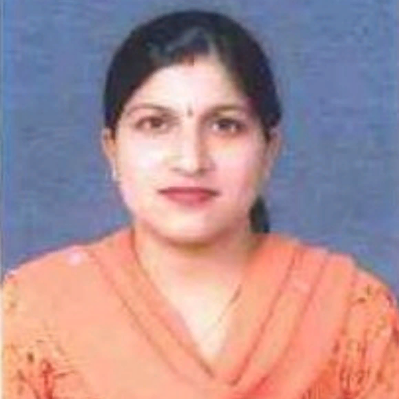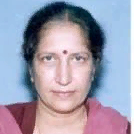International Journal of Image, Graphics and Signal Processing (IJIGSP)
IJIGSP Vol. 6, No. 2, 8 Jan. 2014
Cover page and Table of Contents: PDF (size: 399KB)
Reference Threshold Calculation for Biometric Authentication
Full Text (PDF, 399KB), PP.46-53
Views: 0 Downloads: 0
Author(s)
Index Terms
Reference threshold, authentication, false acceptance rate, false rejection rate
Abstract
In biometric systems, reference threshold is defined as a value that can decide the authenticity of a person. Authenticity means whether the person is genuine or intruder. The statistical calculation of various values like reference threshold, FAR (False Acceptance Rate), FRR (False Rejection Rate) are required for real-time automated biometric authentication system because the measurement of biometric features are statistical values. In this paper, the need of reference threshold, how reference threshold value is calculated is explained mathematically. Various factors on which reference threshold value depends are discussed. It is also explained that how selection of correct value of reference threshold plays an important role in authentication system. Experimental results describe the selection of reference threshold value for palmprint biometric system.
Cite This Paper
Jyoti Malik,Dhiraj Girdhar,Ratna Dahiya,G. Sainarayanan,"Reference Threshold Calculation for Biometric Authentication", IJIGSP, vol.6, no.2, pp.46-53, 2014. DOI: 10.5815/ijigsp.2014.02.06
Reference
[1]B. Schiener, "Applied Cryptography", John Wiley & Sons, 1996.
[2]A. K. Jain, A. Ross, and S. Pankanti, "Biometrics: A Tool for Information Security," IEEE Trans on Information Forensics and Security, vol. 1, no. 2, pp. 125-143, 2006.
[3]A.K. Jain, A. Ross, S. Prabhakar, “An Introduction to biometric recognition”, IEEE Transactions on Circuits and Systems for Video Technology, 14(1):4-20, 2004.
[4]A. Ross, K. Nandkumar, and A. K. Jain. "Handbook of Multibiometrics", Springer Verlag, 2006.
[5]J. Daugman, "Probing the uniqueness and randomness of Iris Codes: Results from 200 billion iris pair comparisons," Proc. IEEE, vol. 94, no. 11, pp. 1927-1935, 2006.
[6]J. Bhatnagar, and A. Kumar, "On Estimating Some Performance Indices for Biometric Identification," Pattern Recognition, vol. 42, no. 5, pp. 1805-1818, 2009.
[7]Y. Adini, Y. Moses, S. Ullman, “Face recognition: the problem of compensating for changes in illumination direction”, IEEE Transactions on Pattern Analysis and Machine Intelligence, 19(7):721-732, 1997.
[8]R G. Gallager, "A Simple Derivation of the Coding Theorem and Some Applications," IEEE Trans on Info. Theory, vol. 11, No. 1, 1965, pp. 3-18.
[9]R. Duda, P. Hart, and D. Stork, "Pattern Classification", Wiley student edition, 1997.
[10]J. Ortega-Garcia, J. Bigun, D. Reynolds, J. Gonzalez-Rodriguez, “Authentication gets personal with biometrics”, IEEE Signal Processing Magazine, 21(2):50-62, 2004.
[11]M. Farenzena, L. Bazzani, A. Perina, V. Murino, and M. Cristani. “Person re-identi?cation by symmetry-driven accumulation of local features”, In Computer Vision and Pattern Recognition, pages 2360–2367, 2010.
[12]D. Gorodnichy and R. Hoshino “Calibrated con?dence scoring for biometric identi?cation”, In Proceedings of NIST International Biometric Performance Conference, 2010.
[13]S C. Dass, Y. Zhu, and A. K. Jain, "Validating a Biometric Authentication: Sample size requirements," IEEE Transactions on Pattern Analysis and Machine Intelligence, vol. 28, pp. 1902 - 1919, 2006.
[14]N.K. Ratha, J.H. Connell, R.M. Bolle, “Enhancing security and privacy in biometrics-based authentication systems” IBM Systems Journal, 40(3):614-634, 2001.
[15]R. Ryan: The importance of biometric standards. Biometric Technology Today, 17(7):7-10, 2009.
[16]F. Deravi: Biometrics standards. Advances in biometrics, 473-489, 2008.
[17]J. Bhatnagar, and A. Kumar, "On Some Performance Measures for Biometric Identification," Proc. of IEEE ICB, 2007, pp. 1035 - 1048.
[18]Y. Zhu, S.C. Dass, and A.K Jain, "Statistical Models for Assessing Individuality of Fingerprints," EEE Trans. on Information Forensics and Security, vol. 2, no. 3, pp. 391-401, 2007.
[19]J. Bhatnagar, A. Kumar, and N. Saggar, "A Novel Approach to Improve Biometric Recognition Using Rank Level Fusion," Proc. of IEEE CVPR, 2007, pp. 43-51.
[20]Jain, A. K., Flynn, P. J. & Ross, A. eds., 2007, “Handbook of biometrics”, Springer.
[21]Jain, A. K., Nandakumar, K., & Nagar, A., 2008, “Biometric Template Security”, EURASIP Journal on Advances in Signal Processing, vol. 2008, Article ID 579416.
[22]Li, S. Z. & Jain, A. K. eds., 2005, “Handbook of face recognition”, Springer.
[23]Prabhakar, S. Pankanti, S., & Jain, A. K., 2003, “Biometric recognition: security & privacy concerns”, IEEE Security & Privacy Magazine, 1(2), pp. 33-42.
[24]Ross, A., Nandakumar, K., & Jain, A.K., 2006, “Handbook of multibiometrics”, Springer.
[25]J. Bhatnagar, and A. Kumar, "Estimating Minimum Sample Size Requirements for Reliable Identification," Proc. of IEEE CVPR, 2006, pp. 18- 25.
[26]Rowe, R. K., 2005, “A multispectral sensor for fingerprint spoof detection Sensors”, 22(1), pp. 1-4.
[27]Wayman, J., Jain, A. K., Maltoni, D., & Maio, D. eds., 2005, “Biometric systems: technology, design and performance evaluation”, Springer.



